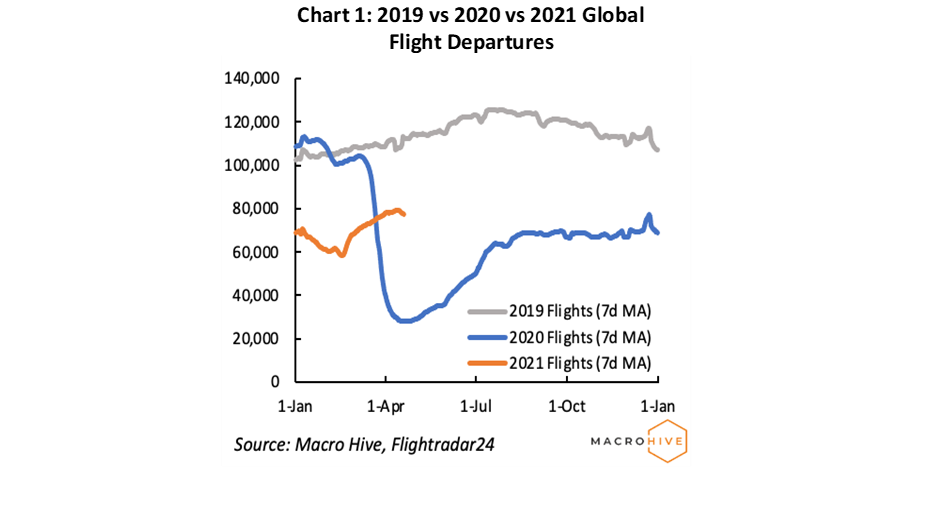

This article is only available to Macro Hive subscribers. Sign-up to receive world-class macro analysis with a daily curated newsletter, podcast, original content from award-winning researchers, cross market strategy, equity insights, trade ideas, crypto flow frameworks, academic paper summaries, explanation and analysis of market-moving events, community investor chat room, and more.
We track scheduled flights (what’s planned) and tracked flights (what’s in the air) from a sample of the largest airports across the world. Looking at data up to 19 April we find the following:
- On Monday, there were 7,542 planned departures and 6,593 actual take-offs, both down 1.5% WoW. Globally,flight departures decreased 2% WoW (Chart 1).
- Across our five US airports, average tracked flights weredown 7% WoW, with actual flights from New York and Dallas down most (Chart 3). Scheduled flights were also down 1.8% WoW, with Atlanta faring worst (Chart 2). Overall, there were 3,577 flight departures from our selected US airports, and capacity stands at 68% of pre-COVID capacity (Chart 4).
- Flight demand continued to decline among our European airports. Scheduled and tracked flights weredown 8% and 4.9% WoW, respectively, with Gatwick and Munich driving the negative change (Chart 3). As a result, European airport capacity declined to 24%, and remains far below other regions, with Madrid highest (33%) and Gatwick lowest (2%).
- Scheduled flights from Asian airports weredown 5% WoW. Meanwhile, tracked flights were up 0.1% WoW, with actual flights from Tokyo and Singapore up most (Chart 3). Overall capacity remains at 59%, with Beijing highest (95%) and Singapore lowest (18%).
Information on long-term movements in flight data is available at the bottom of the page.
US
UK
Italy
Spain
Germany
France
Canada
China
Japan
Hong Kong
South Korea
Singapore